Phragmites
Information
Phragmites australis - Poaceae Family
Other common name: Common Reed
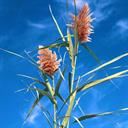
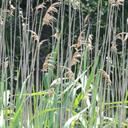
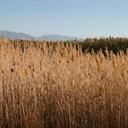
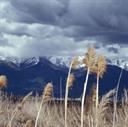
Identification
- Flowers: The flower heads are dense, fluffy, gray or purple in color and 6-15 inches long.
- Seeds: The seeds are brown, light weight, and about 0.3 inches long. In the fall the plant turns brown, and the inflorescences persist throughout the winter.
- Leaves: Broad, pointed leaves arise from thick, vertical stalks. Leaves are 6-24 inches long, 0.5 – 2 inches wide, flat and glabrous
- Flowering Time: Flowering occurs from July to October.
- Life cycle: A tall perennial grass that can grow to 15 ft. in height.
Impacts
- Phragmites is usually found in dense thickets growing in or near shallow water.
- It invades ditches, lakes, ponds, wetlands, and riparian areas, and displaces native plants, alters hydrology and blocks sunlight to the aquatic community.
- Phragmites is native to Eurasia and Africa. Native populations do occur in the United States and they are sometimes very difficult to distinguish from the exotics.
Control
Most effective control methods
- Cutting, burning, application of herbicides (in particular Rodeo), or water management schemes are possible control measures. The measure(s) used will depend on a number of factors, including the size and location.
- For small infestations, cutting has been used successfully to control Phragmites. Since it is a grass, cutting several times during a season, at the wrong times, may increase stand density. However, if cut just before the end of July, most of the nutrient reserves produced that season are removed with the aerial portion of the plant, reducing the plant's vigor. This regime may eliminate a colony if carried out annually for several years.
- Biological control does not appear to be an option at this time.
Large Images
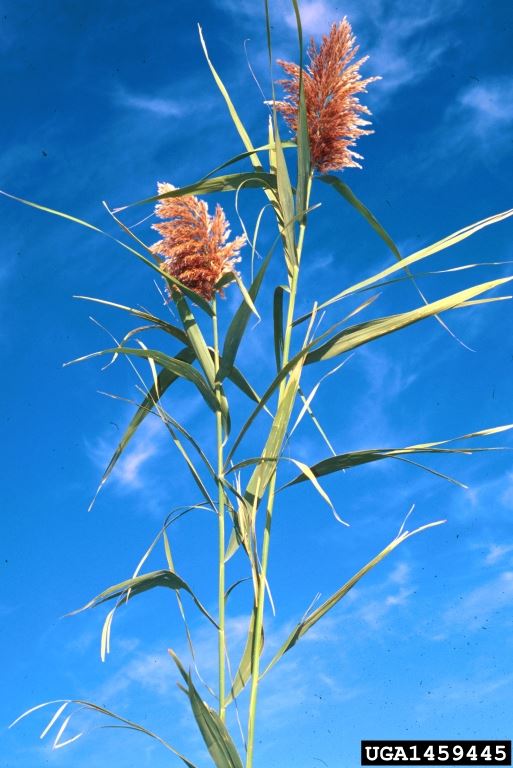
Phragmites
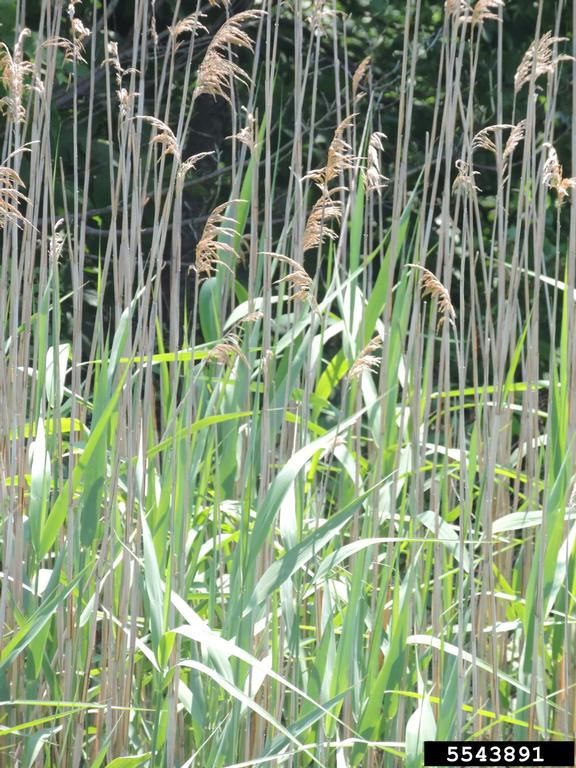
Phragmites: stems and foliage
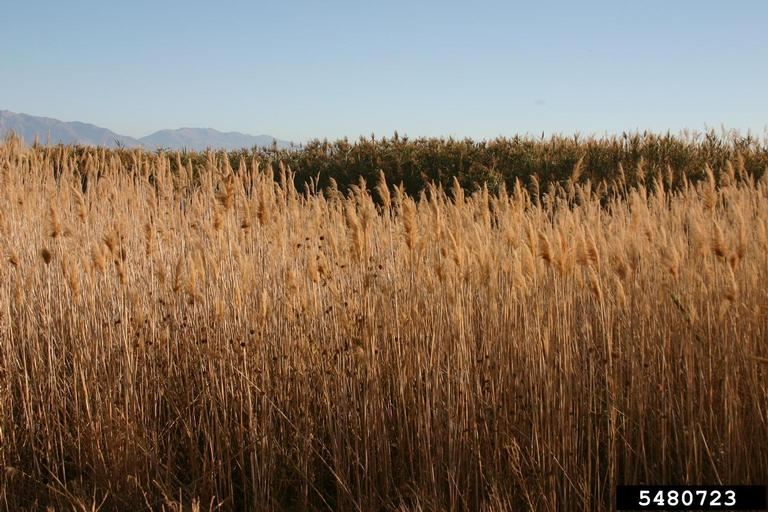
Phragmites: infestation
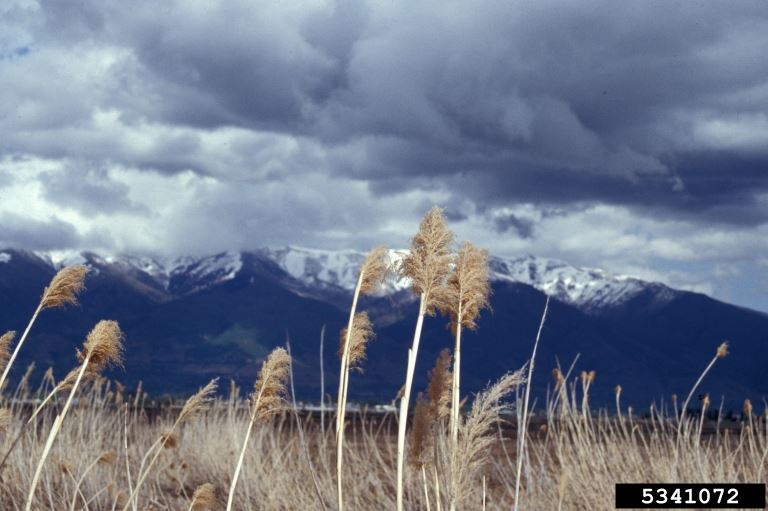
Phragmites: flowers
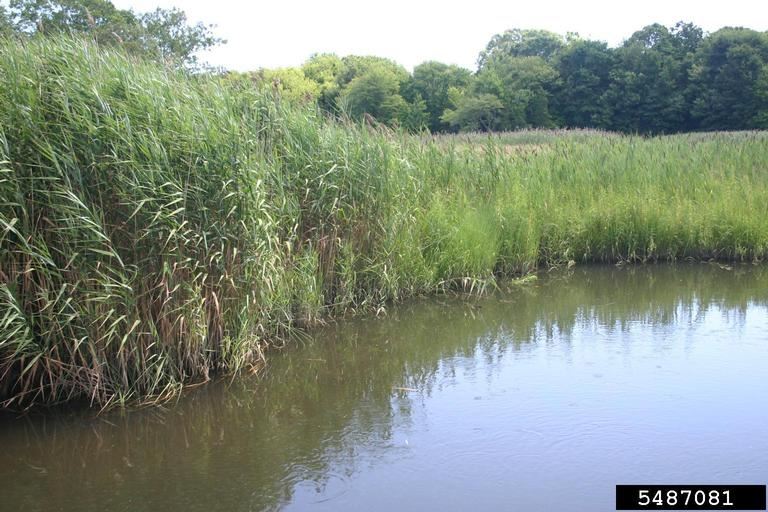
Phragmites: infestation
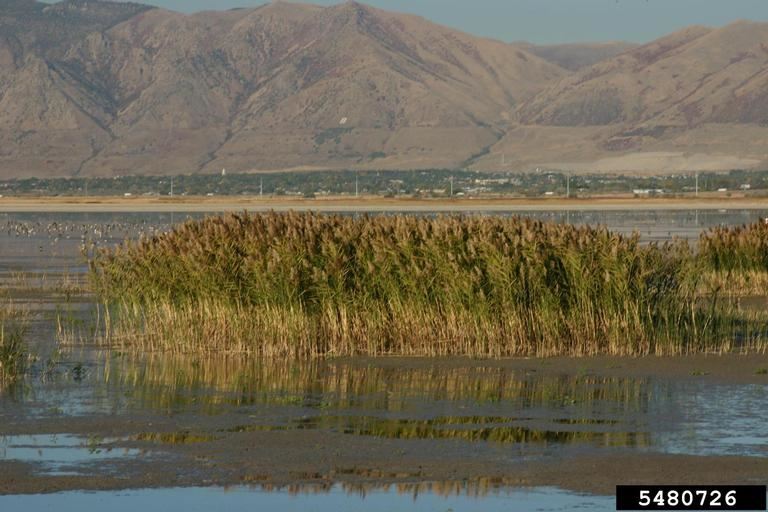
Phragmites: infestation
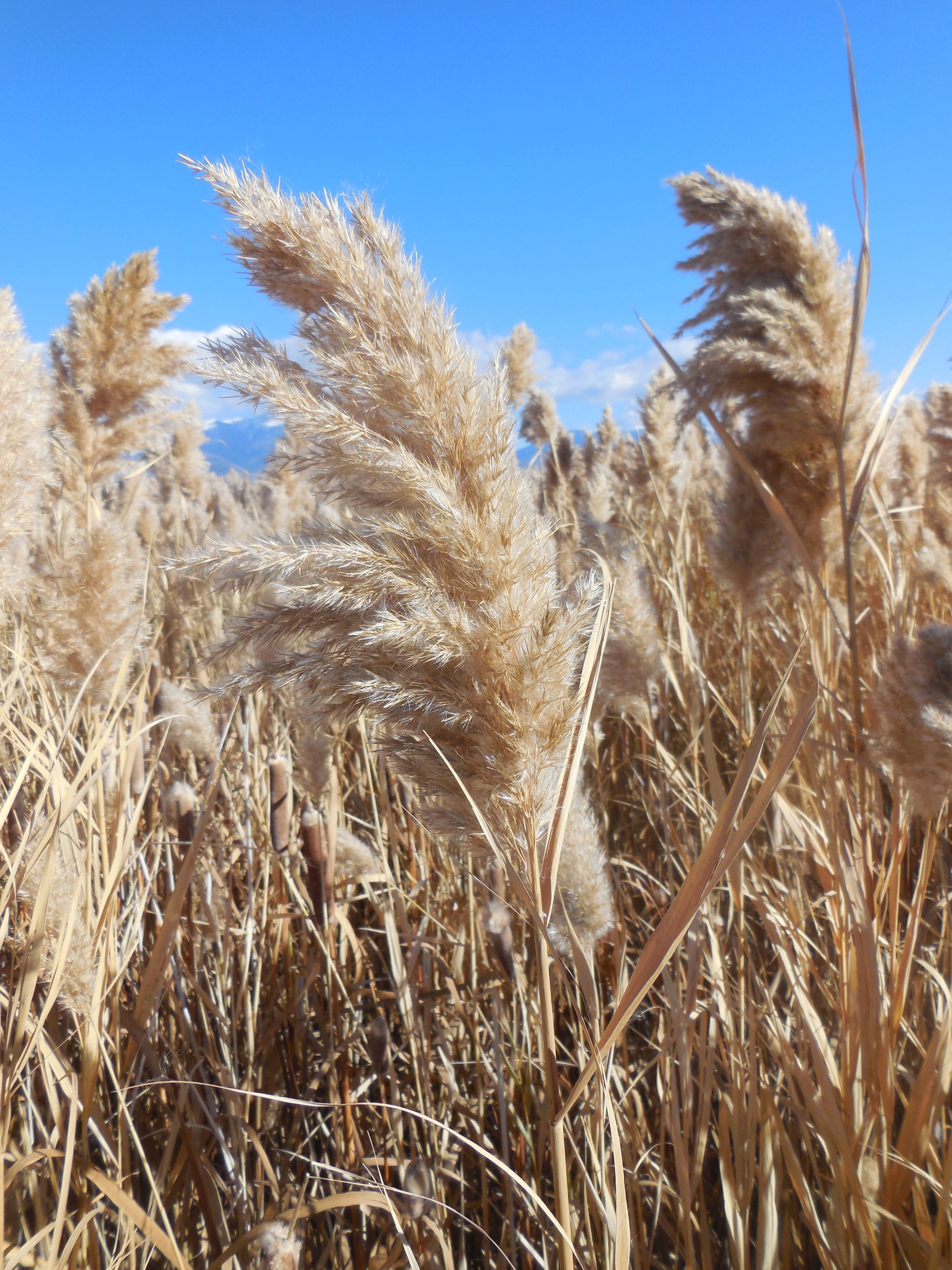
Phragmites: fruit
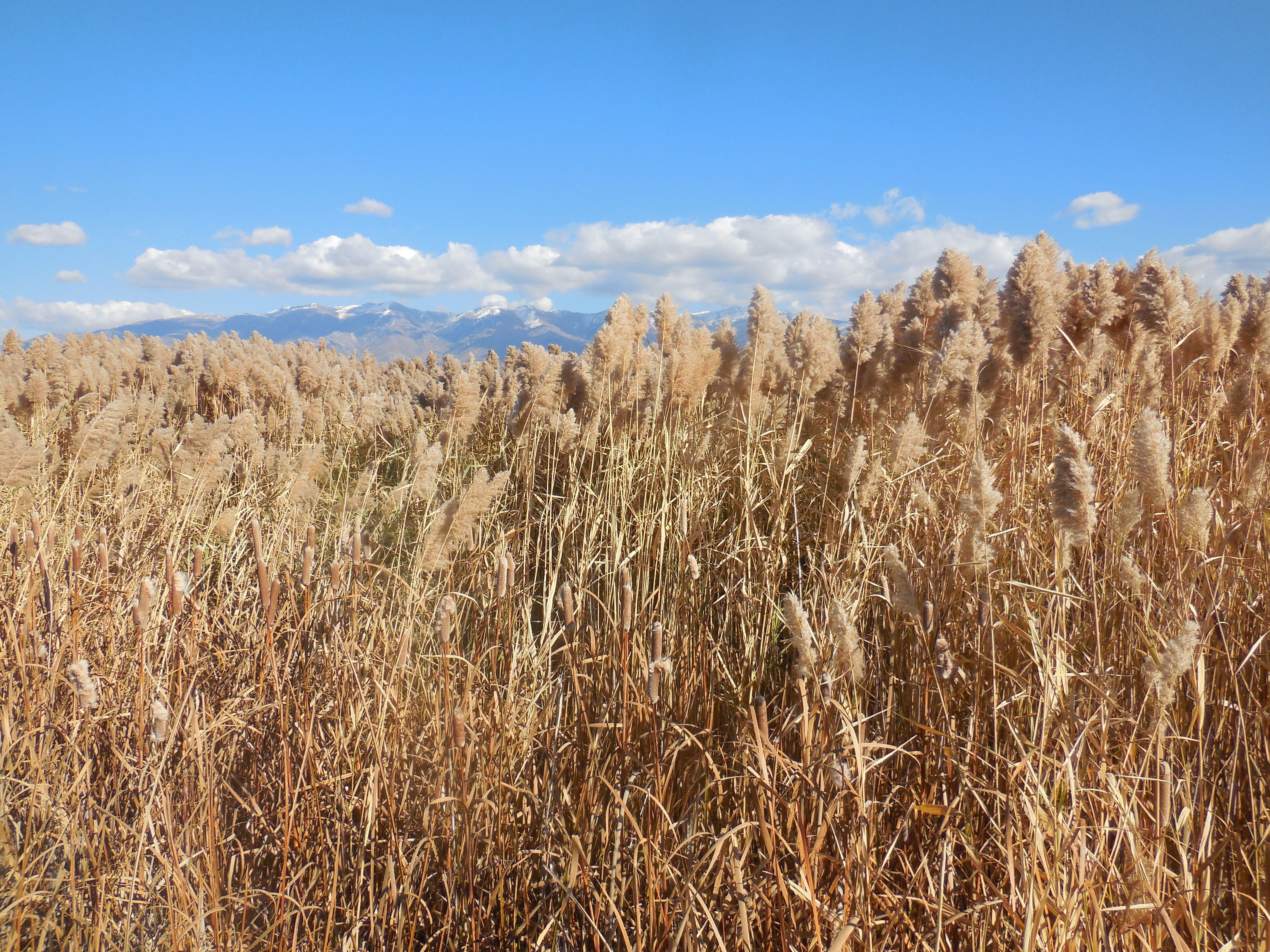
Phragmites: infestation
Resources
-
References
Gucker, C. (2008). Phragmites australis. Fire Effects Information System. Retrieved from https://www.fs.fed.us/database/feis/plants/graminoid/phraus/all.html
Michigan State University Extension. Phragmites. Retrieved from https://mnfi.anr.msu.edu/phragmites/treatment.cfm
Ontario Ministry of Natural Resources. (2011). Invasive phragmites – best management practices [PDF file]. Retrieved from https://www.nvca.on.ca/Shared-Documents/Phragmites-control---best-practices.pdf View PDF
U.S. Fish and Wildlife Services. (2007, November). Phragmites: questions and answers [PDF file]. Retrieved from https://www.fws.gov/GOMCP/pdfs/phragmitesQA_factsheet.pdf




